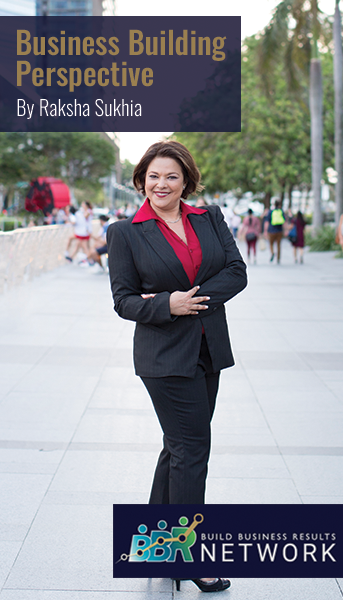Building Strategic Partnerships for Today’s Marketing Challenges

You’ve probably heard the word “partnership” mentioned a lot in marketing-speak, but what does the word really mean in a marketing context? Ultimately, a partnership is a relationship. And like any good relationship, the success of a partnership relies on how it is managed from the onset.
At a time when marketers need to be more intentional about their resources and work smarter, harder and more efficiently, this conversation around partnerships is more relevant than ever as businesses who use partners are seeing value more quickly.
To better understand how marketers can thrive in this new reality, Facebook commissioned a BCG study on the current state of marketing and partnerships. I connected with Katherine Shappley who leads Facebook’s North American Global Business Group, to discuss the future of the marketing ecosystem.
For marketing and tech support, you can visit Build Business Result Network Packages page.
See you on the action-field,
Raksha Sukhia, SMB Growth Expert,
Founder BBR Network. #bbrnetwork
Nerissa MacDonald: The opportunity for marketers has expanded, but so have expectations. What challenges do today’s marketers face?
Katherine Shappley: We’re seeing advances in campaign measurement, consumer expectations for personalization and the economic climate forming the perfect storm of increased pressure on marketers to deliver. Every single dollar spent is being analyzed. Throw matrixed organizations and siloed teams into the mix, and you’re left with clunky decision-making and suboptimal operational execution.
There are industry and market shifts to consider as well. Marketers must factor in everything from the regulatory landscape and privacy policies to the decline of available third-party cookie data, which will require them to build signal-resilient solutions. It can be difficult for any business to excel in all of these areas or even understand where to start.
We know that 94% of consumers globally have changed their behavior due to shelter-in-place and social distancing global measures in response to the Covid-19 pandemic, according to GlobalWebIndex. Advertisers are looking for ways to motivate and engage consumers online as brick-and-mortar locations are becoming less feasible touchpoints. The complexity of that digital transformation can make it difficult and time-consuming to execute a cost- and time-efficient strategy. That’s where partners can come in.
There are partners in our ecosystem that focus on digitization and provide the technology and resources to help. Things like workable local inventory feeds that, when paired with dynamic creative templates and location-centric targeting, enable the instant creation of thousands of localized ads. This powers a seamless management of store statuses and delivers a personalized and contextually-relevant experience to consumers which, in turn, can drive meaningful results for advertisers. According to BCG’s findings, 99% of brands and agencies already rely on external partners. What trends are you seeing in how partners are addressing current challenges?
Partners are developing capabilities based on those consumer behaviors. In the retail space, brands and agencies are working with partners to implement buy online, pick up in-store (BOPUS) or curbside pickup strategies. A lot of partners are also being used to move CPG brands from offline to online.
What advice do you have for marketers looking to partner more effectively?
I spend a lot of time in New Orleans, so excuse my metaphor, but I like to think of the best brand and partnership relationships as a gumbo. Individually, they all serve a specific function and bring something new to the stew. But together, they can combine to build an incredible competitive advantage. Here are a few of our top takeaways for marketers looking to improve their ecosystem management:
Embrace that you can’t build or do everything in-house – Assess the value of building in-house relative to external solutions and determine what you can manage long-term. BCG’s research found that partners are most often tapped for creative production and design, marketing and advertising technology and media planning and buying capabilities.
A strong and collaborative partnership between Chameleon Cold Brew, one of my favorite local Austin brands, and Tongal is a great example of this. They were able to use existing assets from Chameleon and repurpose them into Instagram video ads that used polling stickers to create an interactive experience for their customers.
Treat external partners as extensions of your team – In our research with BCG, a creative VP noted that the most effective teams are the ones in which you can’t tell who works for the brand and who works for a partner. View external partners not as vendors, but as essential components to the execution of your strategy. It’s about alignment, not assignment.
Measure success with concrete metrics that resonate across the organization – Successful teams align around common goals, prioritizing consistent metrics that drive business impact to make strategy clearer, prioritization simpler and resourcing decisions easier.
Every good partnership gets better when there’s a bit of push and pull, and I think there’s a real opportunity to push partnerships further based on joint capabilities from both parties. What you bring to and gain from a partnership should evolve over time.
The good news is that advertisers and agencies have had decades of experience with ecosystem management, so they are already well-positioned for success. I’m excited to see how marketers will continue to innovate and adapt as the landscape changes.
SignUp for Weekly Ezine
Related Article
What’s a Good Landing Page Conversion Rate?
Business Agility Is the New Norm. Do You Have What It Takes?
Tags
#BBR Network, #LinkedIn #Social Media Marketing, #Profitability, #Small Business Growth, #Small Business Marketing and Sales, #SMB, #SME, B2B, Build Business Results, Build Business Results (BBR), Build Business Results (BBR) Mastermind.










